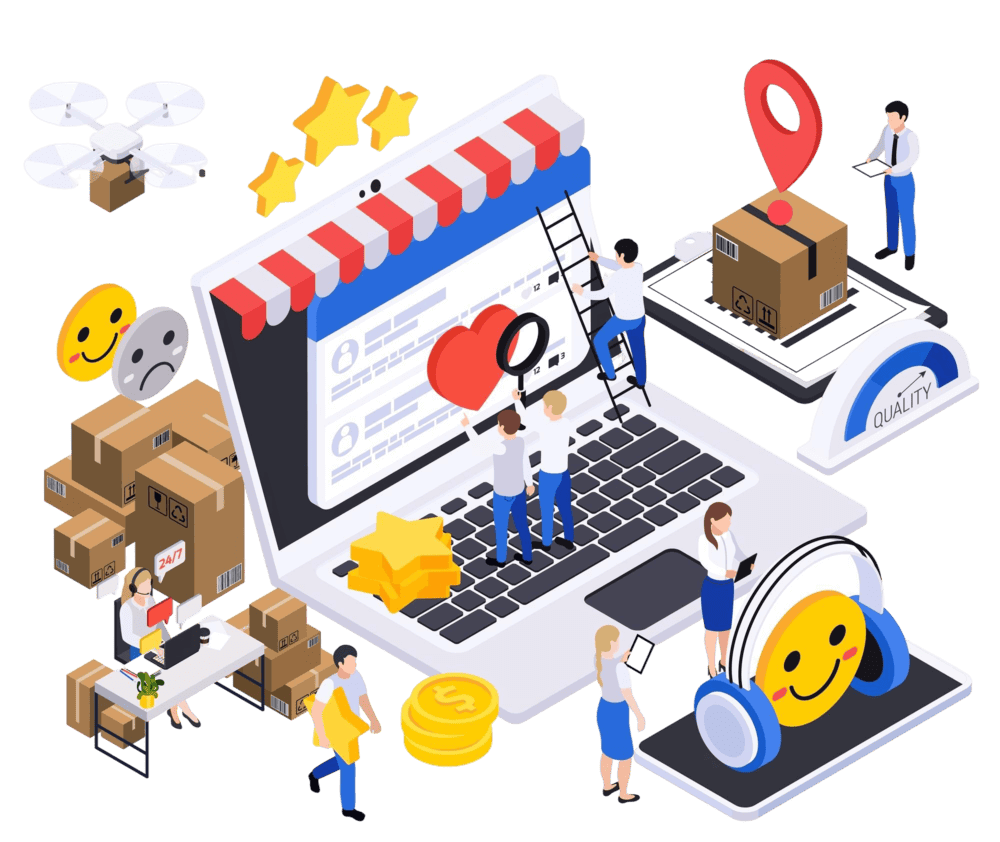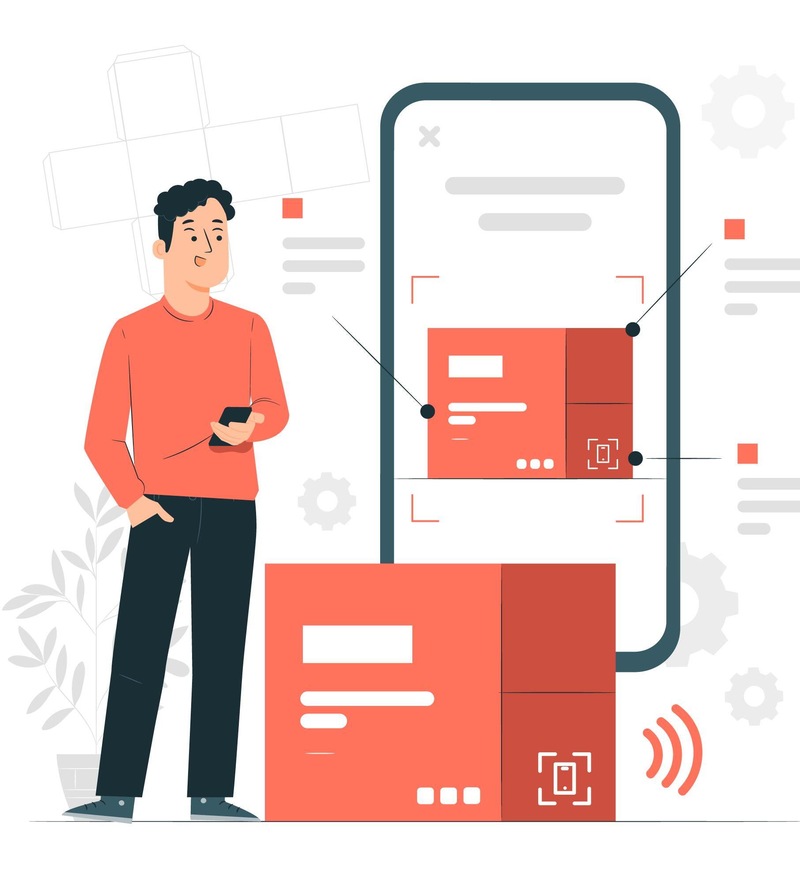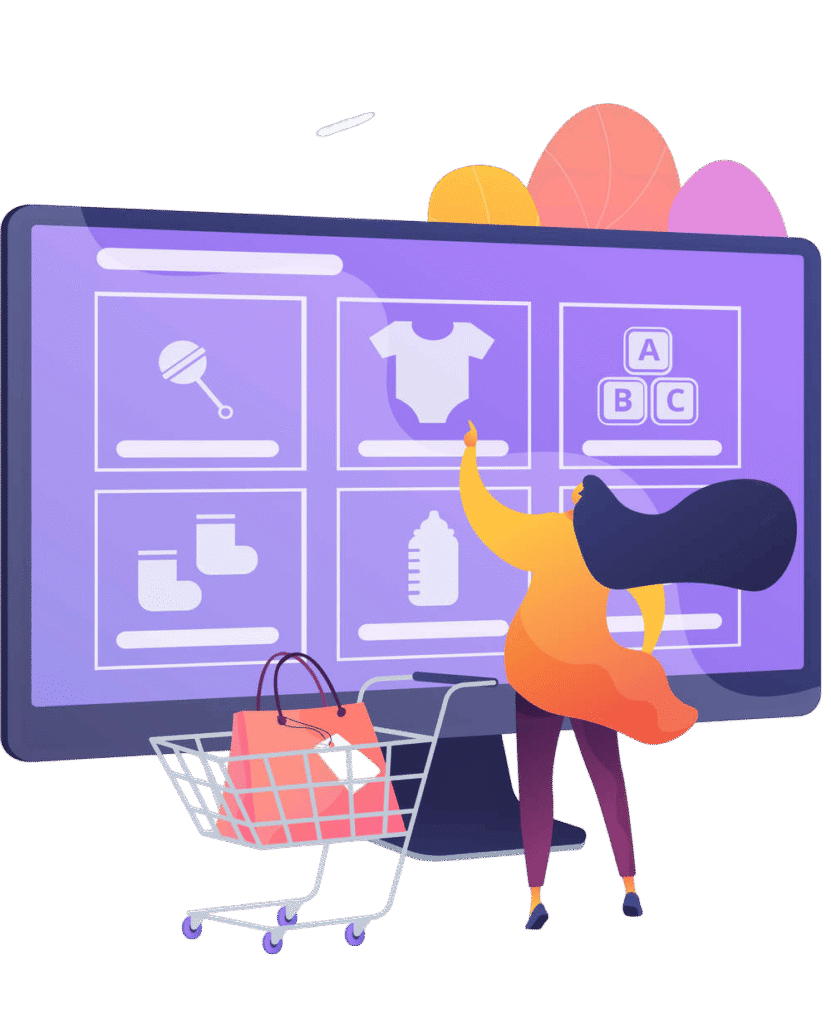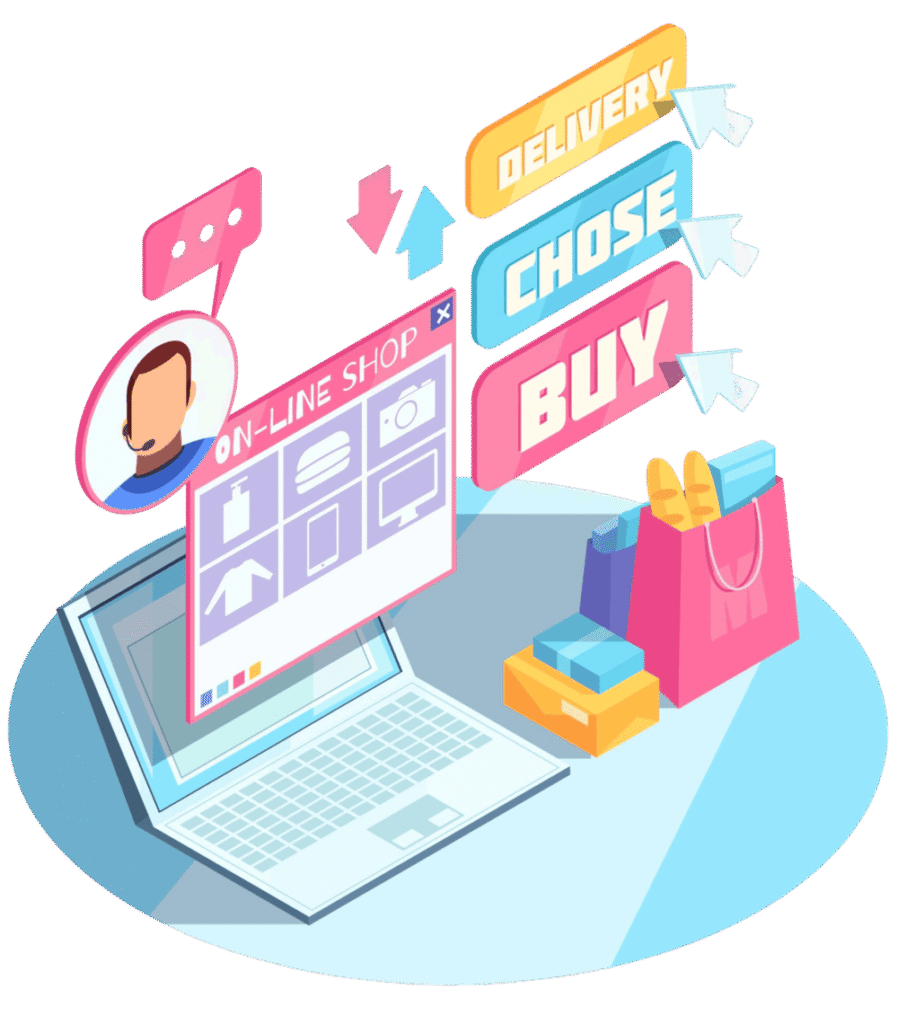
What Is Dropshipping?
The Basic Definition
Let’s break it down—Dropshipping 101 means selling products without ever touching them. Unlike traditional retail, you don’t stock items in your garage or a warehouse. When someone places an order in your online store, the supplier ships it directly to the customer. That’s it. No inventory headaches. No bulk buying upfront. It’s perfect for anyone asking “how to start a dropshipping business with no money?”—because the startup costs are crazy low. And yep, this lean business model makes it one of the most popular dropshipping side hustles of 2025.


How the Dropshipping Process Works?
(Supplier → Store → Customer)
Here’s how the magic happens:
- You find a winning product (think high-ticket dropshipping products or niche gadgets).
- You list it on your online store (Shopify, WooCommerce, or Etsy).
- A customer buys it from your site.
- You forward the order to your supplier (like CJ Dropshipping, Spocket, or AliExpress).
- They ship it straight to your customer.
It’s that simple. And with automation tools and the best dropshipping apps like DSers or AutoDS, managing it becomes almost hands-free. If you’re into passive income, dropshipping jobs like this can deliver freedom with the right systems in place.
Why Dropshipping Still Works in 2025
Global Ecommerce Stats
If you’re thinking “is dropshipping dead in 2025?”—not even close. According to Statista, global ecommerce sales are expected to hit $6.3 trillion in 2025. That’s an ocean of opportunity. And a big chunk of it is being powered by small online stores using the dropshipping model. Platforms like TikTok Shop and Shopify have made launching stores easier than ever—no wonder dropshipping success stories keep popping up.
Shift Toward Low-Overhead Online Businesses
The 2025 entrepreneur isn’t building brick-and-mortar shops. They’re building smart, lean businesses online. Dropshipping fits this wave perfectly. You can start dropshipping for free using trial tools, YouTube tutorials, or even a free dropshipping course. No need to hire staff, rent office space, or sink thousands into stock. It’s like running a store without the storefront—low risk, big potential.
More people are even turning to organic dropshipping—leveraging SEO, TikTok, and Instagram Reels instead of spending huge amounts on dropshipping ads. That means more profit margin, especially for those selling dropshipping products with high profit margin.
Consumer Demand for Niche, Fast-Shipping Products
Shoppers in 2025 are picky. They want niche products, lightning-fast delivery, and a smooth customer experience. That’s why tools like reverse dropshipping (where U.S. or EU stores sell to buyers in developing countries) and high ticket dropshipping (think $500+ products) are growing fast.
It’s also important to pick solid dropshipping leveranciers (Dutch for suppliers), especially if you’re targeting EU markets. People want items in 3–7 days—not 30. That’s why U.S.-based and local fulfillment suppliers are killing it this year.
So, if you’re asking “how can I start dropshipping with no money in 2025?”—you’re in the right place. The demand is there. The tools are better than ever. And your earning potential? Sky-high. Just don’t treat it like a get-rich-quick scheme. Dropshipping is real work with real rewards.
Dropshipping vs. Traditional Retail
Let’s kick off this dropshipping 101 comparison by looking at the classic retail setup. Traditional retail requires buying inventory upfront, renting storage space, handling shipping, and hoping customers buy what you stocked. Risky? Yep. Expensive? Absolutely.
Now, compare that to dropshipping jobs—where you only purchase products after a customer places an order. No bulk buying, no warehouse, and no need to pack boxes yourself. It’s a plug-and-play model that gives you a shortcut into ecommerce without the startup stress. In fact, many dropshipping success stories in 2025 started as a dropshipping side hustle before scaling into full-time businesses.
Thanks to best dropshipping apps like DSers, Zendrop, or AutoDS, launching is quicker than ever. Want something even more hands-off? Try digital dropshipping—selling digital products like eBooks or templates with zero shipping involved. If you’re still wondering, is dropshipping dead in 2025? Nope—it’s just gotten smarter, leaner, and more global.


Dropshipping vs Ecommerce
Here’s where things get interesting: dropshipping is a type of ecommerce, but not all ecommerce is dropshipping. With traditional ecommerce, you manage stock, fulfillment, and branding yourself—or through a third-party logistics provider (3PL). You’ll need more capital upfront, but also more control over packaging, shipping speed, and customer experience.
With dropshipping, you’re basically the middleman. You build the store, run dropshipping ads, handle support, and let your dropshipping leveranciers (suppliers) do the shipping. It’s ideal if you want to start dropshipping for free or learn how to start a dropshipping business with no money.
If you’re planning to scale big, consider forming an LLC for dropshipping to legitimize your brand and separate personal from business finances. Whether you’re exploring dropshipping jobs, freelancing in organic dropshipping, or leveraging high ticket dropshipping products for serious margins, 2025 is all about flexibility.
Ecommerce vs Dropshipping
Flipping the script—when does ecommerce outperform dropshipping? When you’re in it for long-term growth and branding. Owning your supply chain means more reliability and profit potential. Plus, you can introduce subscription models, offer bundles, and control the unboxing experience.
But here’s the twist: many sellers start with dropshipping with no money, validate their products, then transition into full-blown ecommerce once they’re profitable. Think of it as the test-drive before buying the car.
Want proof? The average dropshipping income varies widely, but some entrepreneurs report $2,000–$10,000/month after a year of consistent work. And with more dropshipping business names entering the market daily, standing out with strong branding is more important than ever.


Print on Demand vs Dropshipping
Print on Demand (POD) is one of the top dropshipping alternatives in 2025, especially for creators and influencers. You upload a custom design—on shirts, mugs, journals—and your POD provider prints and ships it only after someone orders. Just like dropshipping, you don’t hold inventory. But unlike generic products, you’re selling your original creations.
This is perfect for reverse dropshipping—where you sell quality products from the West to customers in Asia or emerging markets. POD works well in this setup if you’re targeting niche, premium buyers.
Just like other forms of dropshipping, it’s halal (yes, is dropshipping halal is a top search now), legal (as long as you’re compliant—yes, is dropshipping legal, too), and scalable. Want to speed things up? Grab a free dropshipping course to learn POD tricks, or start selling dropshipping products with high profit margin via platforms like Printful or Printify.
How to Start a Dropshipping Business in 2025
Getting into dropshipping with no money might sound like a dream, but in 2025, it’s surprisingly doable if you follow a clear roadmap. Whether you’re chasing dropshipping passive income, trying to build your first LLC for dropshipping, or just exploring dropshipping jobs to supplement your income—it all starts here.
Step 1: Pick a Niche With Demand and Low Competition
Don’t just chase trends—niche selection can make or break your store. You want a niche that’s hot enough to sell, but not so saturated that you’re competing with giants. Look for products that solve real problems or tap into passionate audiences (think: pet parents, new moms, hobbyists, etc.).
Tip: Use tools like Google Trends, TikTok search bar suggestions, and AliExpress order volume to validate product demand. Bonus points if your niche allows for high ticket dropshipping products—because more profit per sale = faster growth.
Want ideas? Look into reverse dropshipping or digital dropshipping if you’re targeting non-traditional markets. These niches are blowing up in 2025.
Step 2: Find Reliable Suppliers
Now, let’s talk suppliers. Your dropshipping leveranciers are your backbone. Unreliable shipping or poor product quality can kill your store’s reputation overnight. Platforms like Spocket and Zendrop now offer faster U.S. and EU shipping, while AliExpress still works for low-cost testing.
Research your suppliers. Order sample products, check reviews, and monitor fulfillment times. Inconsistent quality = refunds, chargebacks, and frustrated customers. And if you’re targeting organic or eco-conscious buyers? Consider organic dropshipping suppliers that specialize in sustainable goods.
Step 3: Set Up Your Online Store
Next up—your storefront. Shopify is still the gold standard for beginners, but WooCommerce and Wix offer more customization if you’re tech-savvy or on a tighter budget.
Make sure your store looks clean, loads fast, and has a smooth checkout. Don’t stress about perfection—just get it live. Use tools like Canva for DIY branding, and pick a memorable name using dropshipping business names generators (there are plenty online). And yes, it helps your SEO too.
If you’re unsure where to start, you can literally start dropshipping for free with a Shopify trial and free product listing apps.

Step 4: Add Products and Optimize Your Listings
Don’t just upload products blindly. Add 5–10 quality products with strong images, benefit-driven descriptions, and customer-focused copy. Use keywords your buyers are actually searching for—like “eco-friendly,” “best travel gear,” or “minimalist kitchen tools.”
Optimize your titles for dropshipping products with high profit margin, and highlight unique selling points. Reviews and social proof matter—so import product reviews where possible. SEO your product pages just like a blog post. The more descriptive, the better.
Step 5: Launch With a Solid Marketing Plan
Ready to launch? Don’t hit “go” until you’ve got your dropshipping ads strategy in place. Organic reach still works in 2025, especially on TikTok and Instagram Reels. Short, viral videos can make a new product explode overnight. Use trending audio, stitch competitor videos, and showcase your product in action.
Pair organic with paid ads—Facebook Ads are great for retargeting and broad reach. If you’re new to this game, many free dropshipping courses now include ad templates and walkthroughs for 2025’s platforms.
Pro Tip: Don’t forget email marketing. Capture leads with a welcome discount popup and automate a few emails using Klaviyo or Mailchimp. This boosts lifetime value and builds long-term trust.
Is Dropshipping Profitable in 2025?
Short answer? Yes. But let’s break it down like someone who’s been in the game—not someone selling you a dream.
Average Profit Margins and Earning Potential
In 2025, the average dropshipping income varies wildly depending on your niche, strategy, and marketing skills. According to Shopify’s 2025 Ecommerce Trends Report, most dropshippers earn between 15–45% profit margins per product, with high ticket dropshipping hitting upwards of 60% if done right.
For example, a product sourced at $20 and sold at $50 nets a $30 gross margin—but after ads, apps, and fees, you might clear $10–15 per sale. Multiply that across hundreds of orders and you’ve got real money, especially if you’re leveraging dropshipping products with high profit margin.
Realistic Income Expectations for Beginners
So, how much can you make when starting ecommerce from scratch? If you’re consistent, even dropshipping with no money can yield $200–$1,000/month in your first few months. That’s assuming you’re reinvesting in ads, testing products, and dialing in your offer.
By month 6 to 12, scaling to $2k–$5k monthly profit is realistic. Some dropshipping success stories in 2025 are earning six figures annually, especially in digital dropshipping or reverse dropshipping niches. But it doesn’t happen by accident—it takes hustle, strategy, and optimization.

Common Costs to Consider (Apps, Ads, Hosting)
Let’s not sugarcoat it—dropshipping is not 100% free. Here’s what you’ll likely spend starting out:
Item | Estimated Monthly Cost |
|---|---|
| Shopify/WooCommerce Plan | $29 – $79 |
| Paid Apps (DSers, Upsells, etc.) | $20 – $50 |
| Facebook/TikTok Ads | $100 – $1,000+ (scalable) |
| Domain + Email Hosting | $15 – $30 |
| Product Samples (Optional) | $50 – $100 |
Want to keep it lean? You can start dropshipping for free using platforms like Big Cartel, or test ads with TikTok Organic while avoiding high startup costs.
Pros and Cons of Dropshipping
Every side hustle has a flip side. Let’s break down the real deal with dropshipping.
Pros: Low Barrier to Entry, Flexible Lifestyle, Scalable
✅ Start with low capital – You can literally learn how to start dropshipping with no money and scale up.
✅ No inventory headaches – Suppliers handle the products, shipping, and fulfillment.
✅ Total flexibility – Whether it’s a weekend gig or full-time dropshipping job, you can work from anywhere.
✅ Scalable model – With the right dropshipping ads strategy and automation tools, growth is practically unlimited.
If you’re looking for a business that fits your lifestyle and doesn’t require a warehouse or staff, dropshipping passive income is as real as it gets.
Cons: Supplier Issues, Tight Profit Margins, High Competition
⚠️ Unreliable suppliers – If they mess up, you take the heat. Always vet your dropshipping leveranciers first.
⚠️ Thin margins – Especially with budget products. To win here, aim for high ticket dropshipping products or create bundles.
⚠️ Saturated market – With so many beginners jumping in (especially after every viral free dropshipping course), standing out can be tough.
⚠️ Ad costs are rising – Facebook and TikTok ads aren’t cheap. Without proper targeting, you can burn cash fast.
So, is dropshipping dead? Not even close. But in 2025, lazy dropshippers are. It’s the sellers who treat this like a real business—branding, testing, optimizing—who win big.
Best Products to Dropship in 2025
Trending Niches: Home Fitness, Beauty Tech, Eco-Friendly Gadgets
In 2025, the best dropshipping products with high profit margin are found in niches people are already obsessed with—like home fitness gear, smart beauty tech, and eco-friendly gadgets. Think resistance bands, LED skincare masks, or reusable smart bottles. These items are perfect for high ticket dropshipping because they solve real problems and customers are willing to pay a premium.
For organic dropshipping brands looking to stay ahead, these trending niches are goldmines. They’re scalable, they tap into viral potential on TikTok, and best of all, they rarely require complicated customer support.
Where to Research Trending Products
If you’re wondering where successful dropshipping jobs start—it’s with product research. Platforms like Google Trends, TikTok’s Creative Center, and tools like Koala Inspector help you track what’s taking off before your competition catches on. TikTok especially has become a product discovery engine. If it’s trending there, it’s probably hot for dropshipping ads too.
Another pro tip? Spy on your competitors. Use dropshipping spy tools to reverse-engineer viral stores and find untapped winners. This is especially useful for reverse dropshipping, where you bring quality products into higher-income markets.
What Not to Sell
Avoid anything with sketchy suppliers, licensing issues, or dangerous claims. That includes knockoff electronics, products with copyright-infringing logos (looking at you, fake Nike), and anything banned in major ad platforms.
Selling risky items can get your store banned or worse—shut down. Want to build dropshipping passive income that lasts? Stick to compliant, evergreen products.
Tools to Succeed in Dropshipping
Shopify Apps
DSers is the go-to Oberlo alternative now that Oberlo has shut down. It automates ordering, syncing with AliExpress suppliers for easy fulfillment. Other useful Shopify apps include Loox for reviews (social proof = more conversions) and Vitals, which combines 40+ tools into one app.
The right tools make your dropshipping side hustle feel more like a full-blown business. And when you’re starting dropshipping with no money, free plans from DSers and Loox give you room to grow.
Marketing Tools
Canva is your content creation bestie. From ad creatives to product mockups, it’s a no-brainer. Pair that with ChatGPT for copywriting, AdSpy for ad research, and Ubersuggest for keyword planning, and you’ve got a marketing stack that can rival any agency.
Running high ticket dropshipping ads? These tools will help you create better-performing creatives and messaging—without hiring a team.

Automation Tools to Save Time and Boost Conversions
Want to scale without burning out? Use automation tools like Shopify Flow, Zapier, or AutoDS to handle repetitive tasks. Schedule emails, auto-sync tracking numbers, and follow up with abandoned carts like a pro.
Digital dropshipping in 2025 isn’t just about launching a store—it’s about optimizing every piece of your funnel. Automation lets you focus on scaling rather than micromanaging.
Common Dropshipping Mistakes to Avoid
Picking the Wrong Niche
Here’s the hard truth: not every niche is profitable—especially in dropshipping 101. One of the biggest mistakes beginners make is jumping into an oversaturated market (like phone cases or leggings) or picking something they know nothing about. Successful high ticket dropshipping starts with real research. Look for passion-driven markets, trending niches, or underserved products with steady demand.
Ignoring Customer Service
Think customer service doesn’t matter in a low-cost dropshipping side hustle? Think again. With longer shipping times and minimal control over fulfillment, your customer service game needs to be top-notch. Delayed responses, ignored complaints, or refund issues can kill your store’s rep and lead to chargebacks. If you want dropshipping passive income to be sustainable, build trust—one support ticket at a time.
Relying on One Supplier
Depending on just one supplier is risky—especially when it comes to dropshipping jobs that rely on timely delivery and consistent quality. If that supplier goes out of stock or ghost ships (yes, it happens), your store goes down with them. Have at least 2–3 verified dropshipping leveranciers as backup to avoid fulfillment disasters.
Underestimating Shipping Times and Returns
Long delivery windows (10–25 days) from overseas suppliers still exist in 2025. And customers? They’re used to Amazon-speed shipping. Not managing expectations in your dropshipping ads or store policies is a fast way to earn one-star reviews. Offer clear timelines, tracking info, and a simple return policy to keep buyers happy—even if things go sideways.

Is Dropshipping Right for You?
Time Commitment vs. Returns
Can you build a store with dropshipping with no money? Yes. But should you expect instant results? Nope. Dropshipping takes time—product research, launching ads, testing creatives, and handling orders. Many underestimate how much learning and effort goes into hitting those first $1K months. If you’re not ready to grind, this might not be the path for you.
Entrepreneur Mindset Required
Dropshipping isn’t a get-rich-quick scheme. It’s a business. A real one. You’ll need resilience, creativity, and problem-solving skills. Whether you’re building your brand or exploring digital dropshipping, success depends on how well you can adapt, test, and pivot. This model rewards entrepreneurs, not dabblers.
Who Shouldn’t Try Dropshipping
If you’re not willing to invest time learning, hate dealing with customer support, or expect overnight success, dropshipping might not be for you. Also, if you’re hoping to “set it and forget it,” try print on demand or affiliate marketing instead. They’re better fits for hands-off income streams.
Conclusion: Can You Still Profit from Dropshipping in 2025?
Absolutely—but only if you treat it like a real business. The average dropshipping income might start slow, but with the right niche, tools, mindset, and marketing, it’s scalable. The rise of high ticket dropshipping products, automation tools, and organic traffic channels makes now a great time to start.
Whether you’re diving into reverse dropshipping, building a brand through dropshipping passive income, or enrolling in a free dropshipping course to learn the ropes, the opportunity is still very much alive. The key? Take action. Launch fast, test smart, and never stop improving
Frequently Asked Questions About Dropshipping
Yep, you really can start dropshipping for free in 2025. Platforms like Shopify offer trials, and tools like Koala Inspector help you spy on competitors without spending a dime. If you’re broke but motivated, stick to organic dropshipping—meaning SEO blogs, TikTok, and IG Reels to drive traffic instead of paid ads. Want a shortcut? Enroll in a free dropshipping course to get started fast without wasting months on trial and error.
High ticket dropshipping is where you sell premium stuff—think massage chairs, home saunas, standing desks—basically any high ticket dropshipping products that cost $200 and up. The big win? Instead of selling 50 cheap items to make a profit, you sell one and pocket $100+ per order. If you’re after serious dropshipping passive income, this is your lane. It’s more setup, sure, but the payoff is way bigger.
Short answer: Yes. Long answer? Only if you treat it like a real business. While the average dropshipping income for beginners is around $500–$2,000/month, there are plenty of dropshipping success stories pulling in five figures a week. But don’t get it twisted—success takes branding, smart dropshipping ads, and maybe an LLC for dropshipping once you’re earning consistently. It’s not a get-rich-quick scheme, but it’s a real path to wealth if you hustle smart.
Technically, dropshipping is legal, but if you’re under 18, you can’t create business accounts on most platforms without adult supervision. That said, many young hustlers run successful stores using a parent or guardian as the registered owner. Just make sure to play it safe and honest—no sketchy supplier deals or shady marketing.
Ah, the big moral question. Is dropshipping ethical? It can be—as long as you’re transparent, sell legit products, and actually deliver on promises. What turns people off is when sellers use low-quality suppliers, hide shipping delays, or sell junk with a massive markup. Want to sleep at night? Use trusted dropshipping leveranciers, test your products, and treat customers like real people—not just dollar signs.
Digital dropshipping is the 2025 upgrade of the model—no physical products involved. You sell things like Canva templates, eBooks, or online courses, and the customer gets instant access. It’s basically dropshipping with no inventory or shipping stress, and the profit margins are even sweeter. If you’ve got skills or know a niche, this might be the easiest way to make money without touching a single box.
The debate on is dropshipping halal or haram depends on how you run it. If you’re honest, own the items you’re selling (even via contract), and aren’t misleading buyers, most scholars say it’s halal. But lying about shipping times, pricing, or product quality? That crosses into haram territory. So, transparency is key—ethics always pay off long-term.
In one word? Absolutely—if you do it right. For people looking for a flexible dropshipping side hustle or a full-time business model, it’s one of the lowest-barrier entries out there. Especially in 2025, with tools like the best dropshipping apps, AI-powered ad tools, and killer product research platforms, you can scale smarter and faster. Just don’t expect magic overnight.
Organic dropshipping means getting sales without paying for traffic. We’re talkin’ blog posts, SEO-optimized product pages, TikTok product showcases, or Pinterest pins that go viral. No dropshipping ads, no budget stress—just pure hustle and content game. It’s slower at first, but great for long-term traffic and building trust. Think of it as the tortoise in the race that wins big over time.
Most platforms (Shopify, PayPal, Meta Ads) require you to be at least 18 to legally run a store. But if you’re younger and serious about getting into dropshipping 101, you can partner with a parent or sibling to launch under their name. Age isn’t the issue—commitment is. Some of the sharpest dropshipping jobs out there are being run by teens with solid strategy and grind.
